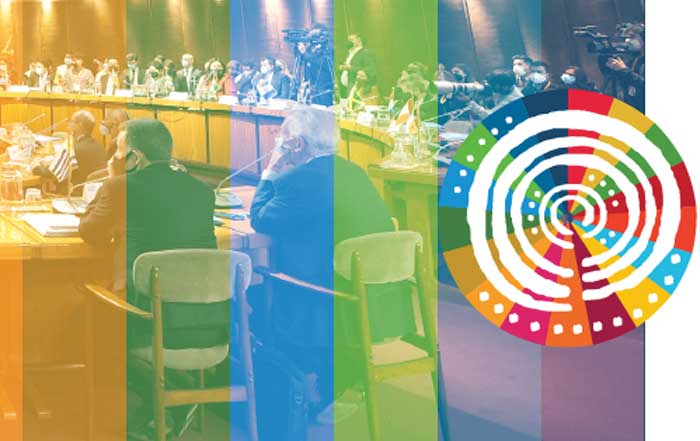The financial sector in North America stands as one of the most powerful and influential in the world, not only because of its sheer scale but also because of its global impact on markets, economies, and investment strategies. By 2025, the leading institutions in the United States and Canada have continued to set the benchmark for banking, asset management, and insurance services, reshaping both regional and international finance. This article provides a comprehensive examination of the Top 20 Largest Financial Companies in North America, analyzing their scale, leadership, and strategies while highlighting how these organizations shape innovation, investment, and sustainable growth.
The Backbone of North American Finance
North America has long been home to the world’s largest financial centers, from Wall Street in New York to Bay Street in Toronto. These companies are not only national champions but also global leaders in investment banking, asset management, and wealth services. They collectively manage tens of trillions of dollars, influence policy debates, and play a crucial role in stabilizing markets during economic turbulence.
The financial powerhouses discussed here demonstrate resilience, innovation, and adaptability in an era shaped by artificial intelligence, fintech disruption, and heightened demand for sustainable business practices. For readers of bizfactsdaily.com/business.html, these firms represent not just balance sheets and profits but real-life impact on employment, innovation, and economic growth.
1. JPMorgan Chase & Co.
JPMorgan Chase, headquartered in New York City, remains the largest financial institution in North America. With assets surpassing $4 trillion in 2025, it dominates investment banking, commercial lending, and consumer finance. Its CEO, Jamie Dimon, has become one of the most influential voices in global finance, often weighing in on everything from monetary policy to digital currency regulation.
The bank’s digital transformation has been a cornerstone of its growth. It has invested heavily in AI-powered risk modeling, blockchain applications, and wealth management platforms to stay ahead of competitors. Its expansive global reach means that JPMorgan is not just a North American giant but a worldwide powerhouse.Explore JPMorgan Chase
2. Bank of America Corporation
Bank of America, headquartered in Charlotte, North Carolina, is one of the most diversified financial services companies in the world. With over $3.5 trillion in assets, it leads in consumer banking, mortgage lending, and digital banking services. Its platform Erica, an AI-powered virtual assistant, has redefined customer engagement, serving millions daily.
As sustainability becomes central to investor expectations, Bank of America has pledged to achieve net-zero greenhouse gas emissions by 2050 and has significantly expanded its green bonds and ESG investment portfolios. The institution plays a pivotal role in shaping the future of sustainable finance and responsible investment.Discover Bank of America
3. Wells Fargo & Company
Wells Fargo, based in San Francisco, continues to rank among the largest financial institutions in North America, with assets exceeding $2 trillion. Despite past regulatory challenges, it remains a dominant force in consumer and small business banking.
Wells Fargo’s strategy for 2025 has focused on digital-first services, including advanced mobile banking tools and real-time payments. Its strong presence in mortgage lending also makes it a critical player in the American housing market, which has faced volatility due to rising interest rates and affordability issues.Visit Wells Fargo
Top 20 Financial Companies in North America
Interactive comparison of assets, headquarters, and company types
| Rank | Company | Assets | Country | Type |
|---|
4. Citigroup Inc.
Citigroup, headquartered in New York, is a truly global bank with operations spanning more than 160 countries. With assets of nearly $2.4 trillion, Citi continues to play a crucial role in global trade finance, treasury services, and capital markets.
The company has invested heavily in fintech partnerships to modernize payments and cross-border transfers. In particular, Citi has positioned itself as a leader in the modernization of global supply chain finance and central bank digital currency (CBDC) collaborations.Learn more about Citi
5. Goldman Sachs Group Inc.
Goldman Sachs, one of the most recognizable names in investment banking, remains a critical player in North America’s financial landscape. With assets of approximately $1.7 trillion, Goldman continues to dominate capital markets, mergers and acquisitions, and asset management.
In 2025, Goldman has emphasized technology-driven growth, including expanding its consumer banking arm, Marcus by Goldman Sachs, and strengthening its digital trading platforms. The firm has also been active in sustainable investment, committing billions to renewable energy and climate initiatives.Visit Goldman Sachs
6. Morgan Stanley
Morgan Stanley, headquartered in New York, has cemented its reputation as a global wealth management leader. Following its acquisitions of E*TRADE and Eaton Vance, Morgan Stanley has combined strong investment banking capabilities with one of the world’s largest wealth management divisions.
With assets of over $1.5 trillion, Morgan Stanley serves millions of clients, from individual investors to large institutions. The firm’s commitment to responsible investing and advanced AI analytics for portfolio management continues to set it apart in a competitive marketplace.Explore Morgan Stanley
7. Royal Bank of Canada (RBC)
The Royal Bank of Canada, headquartered in Toronto, stands as the largest bank in Canada and one of the top financial institutions in North America. With assets over $1.8 trillion CAD, RBC is dominant in retail banking, wealth management, and insurance.
RBC has invested significantly in artificial intelligence research, collaborating with universities and startups to enhance customer service and fraud prevention. It has also prioritized climate-focused financing, aiming to support clients transitioning toward net-zero emissions.Learn about RBC
8. Toronto-Dominion Bank (TD Bank Group)
TD Bank, another Canadian powerhouse, operates across Canada and the eastern United States. With assets exceeding $1.7 trillion CAD, it is a leading force in retail and commercial banking.
TD has gained recognition for its customer experience innovations and strong presence in the U.S. market under the “America’s Most Convenient Bank” brand. It has also been expanding its ESG commitments, with increasing financing toward sustainable housing and renewable projects.Visit TD Bank
9. Bank of Montreal (BMO Financial Group)
BMO, headquartered in Toronto, has grown into one of the most important financial groups in North America. With assets exceeding $1.2 trillion CAD, BMO has a particularly strong footprint in both Canadian and U.S. markets.
The acquisition of Bank of the West expanded BMO’s U.S. presence, giving it greater reach in commercial and retail banking. The institution has positioned itself as a leader in sustainable finance, committing billions to renewable infrastructure investments.Explore BMO
10. Scotiabank (Bank of Nova Scotia)
Scotiabank, headquartered in Toronto, has distinguished itself with a unique international strategy, focusing on markets across Latin America and the Caribbean. With assets around $1.4 trillion CAD, Scotiabank continues to balance strong domestic operations with its global presence.
The bank is particularly influential in emerging markets, providing capital for infrastructure, consumer lending, and trade finance. It has also been at the forefront of digital transformation, offering AI-powered financial planning and mobile-first banking services.Discover Scotiabank
11. U.S. Bancorp
U.S. Bancorp, the parent company of U.S. Bank, is one of the largest regional banks in the United States, with assets surpassing $675 billion in 2025. Headquartered in Minneapolis, it has built a reputation for stability and efficient operations. Unlike some larger institutions, U.S. Bancorp has focused on a conservative risk profile, ensuring consistent returns and customer trust.
The bank’s innovations in digital payments and small business lending have made it a leader among mid-tier financial institutions. It has also expanded its partnerships with fintech firms to enhance real-time payments, data security, and AI-driven lending tools. Its ability to combine technology with community-focused banking has helped U.S. Bancorp remain highly competitive.Learn more about U.S. Bank
12. Truist Financial Corporation
Truist Financial, formed from the 2019 merger of BB&T and SunTrust, is headquartered in Charlotte, North Carolina. With assets exceeding $650 billion, Truist has become one of the largest banks in the southeastern United States.
Truist has invested in digital banking platforms, building on its strong regional presence with a push toward a national digital brand. The company has also expanded into insurance services and wealth management, diversifying its revenue streams. Its long-term focus on sustainability and community reinvestment has strengthened its reputation among socially conscious investors.Visit Truist
13. Charles Schwab Corporation
Charles Schwab, headquartered in Westlake, Texas, is a dominant player in the brokerage and investment management industry. With client assets of more than $8 trillion, Schwab is one of the most influential financial institutions in North America.
Following its acquisition of TD Ameritrade, Schwab solidified its dominance in low-cost brokerage services. Its innovations in digital wealth management and robo-advisory platforms have made investing more accessible for millions of Americans. Schwab’s scale and efficiency have redefined how retail investors interact with the financial markets.Explore Charles Schwab
14. Fidelity Investments
Although privately held, Fidelity Investments remains one of the largest and most important financial institutions in the world. Headquartered in Boston, Fidelity manages assets exceeding $11 trillion in 2025, placing it among the largest asset managers globally.
Fidelity has been a pioneer in 401(k) retirement services, mutual funds, and low-cost index funds. Its role in shaping the growth of exchange-traded funds (ETFs) has been transformative for global investors. In recent years, Fidelity has also ventured into digital asset custody and cryptocurrency trading services, further expanding its influence.Visit Fidelity Investments
15. Manulife Financial Corporation
Manulife, headquartered in Toronto, is Canada’s largest insurance company and a global financial services giant. With assets under management exceeding $1.4 trillion CAD, Manulife offers a mix of insurance, wealth management, and investment services across North America and Asia.
Through its U.S. division, John Hancock, Manulife has become a significant player in retirement and investment services. It has placed heavy emphasis on AI-driven underwriting, customer wellness programs, and sustainable investment practices to appeal to a new generation of clients.Discover Manulife
16. CIBC (Canadian Imperial Bank of Commerce)
CIBC, headquartered in Toronto, is one of Canada’s largest banks, with assets exceeding $1 trillion CAD. Though smaller than RBC, TD, and BMO, CIBC plays an essential role in North America’s financial system.
The bank has been aggressive in expanding its digital banking capabilities, with a strong emphasis on mobile-first services. CIBC has also prioritized green financing initiatives, targeting infrastructure and clean energy projects across Canada and the United States. Its growing wealth management division is a major driver of profitability in 2025.Visit CIBC
17. American Express Company (Amex)
American Express, headquartered in New York, has built its reputation as a leading global payment network and financial services provider. With assets over $200 billion, Amex may be smaller than traditional banks but remains one of the most recognizable financial brands worldwide.
Its premium card services, merchant partnerships, and corporate travel solutions continue to make Amex influential in both consumer and business finance. The company has leaned heavily into fintech innovation, offering mobile-first experiences and expanded AI-driven fraud prevention systems.Explore American Express
18. Prudential Financial, Inc.
Prudential Financial, headquartered in Newark, New Jersey, is one of the largest insurance and asset management firms in North America. With assets under management exceeding $1.5 trillion, Prudential provides life insurance, retirement services, and institutional investment solutions.
The company has focused on longevity planning, helping retirees manage risks associated with increasing life expectancy. Its sustainability strategy includes large-scale investment in renewable infrastructure and climate-resilient assets, ensuring alignment with investor demand for ESG-focused portfolios.Visit Prudential
19. MetLife, Inc.
MetLife, another insurance powerhouse based in New York, manages assets of over $700 billion and serves more than 90 million customers globally. Its core services include life insurance, annuities, and employee benefit programs.
MetLife has expanded its reach by partnering with global technology companies to digitize its insurance and claims processes. It also plays a central role in providing employee financial wellness programs, which have grown in demand as companies seek to retain talent in a competitive employment landscape.Discover MetLife
20. Desjardins Group
Desjardins Group, headquartered in Quebec, is the largest federation of credit unions in North America. With assets exceeding $400 billion CAD, Desjardins has become a cornerstone of cooperative banking, emphasizing member-driven services.
Desjardins has been particularly innovative in sustainable finance, focusing on funding projects that address climate change and social development. Its cooperative model makes it unique among the top 20, as it balances profitability with member benefits and community investment.Learn about Desjardins
The Influence of North America’s Financial Giants
The Top 20 financial companies in North America collectively control tens of trillions of dollars in assets, employ millions, and influence policies across the globe. Their decisions impact global stock markets, shape the trajectory of cryptocurrency adoption, and determine how economies respond to crises and growth cycles.
For readers of bizfactsdaily.com/economy.html, these companies embody the nexus between finance, innovation, and global markets. They also highlight how North America continues to set the pace for technological transformation, sustainable finance, and employment trends in an evolving world.
Innovation, Technology, and the Future of Finance
Innovation has become a unifying theme across these 20 companies. From AI in financial services at JPMorgan and RBC to blockchain adoption at Fidelity and Citi, technology has shifted the competitive landscape. The sector’s future is tied to how quickly these institutions can adopt new technologies while maintaining trust and compliance.
Articles such as bizfactsdaily.com/artificial-intelligence.html and bizfactsdaily.com/technology.html explore how finance is increasingly dependent on data analytics, machine learning, and automation. These tools not only drive profitability but also help protect institutions from cyber threats and regulatory risks.
Employment and the Human Impact
While automation and AI are reshaping operations, these companies remain among the largest employers in North America. Collectively, they provide millions of jobs, ranging from entry-level customer service roles to high-level investment strategists.
The balance between technology and human expertise is essential. Readers of bizfactsdaily.com/employment.html understand that the financial industry is both a source of opportunity and disruption. Reskilling programs, diversity initiatives, and flexible employment models are crucial as the sector prepares for the future workforce.
Sustainable Finance and Global Leadership
Sustainability is no longer a niche strategy; it is a core component of financial decision-making. Institutions like Bank of America, RBC, and Prudential have aligned their investment strategies with global climate goals, creating opportunities for businesses in renewable energy and carbon reduction.
The financial sector’s leadership in green bonds and climate finance underscores the growing connection between profitability and responsibility. Readers can dive deeper into these themes at bizfactsdaily.com/sustainable.html, where sustainable business models are reshaping the global economy.
The Global Reach of North American Finance
From the skyscrapers of New York to the financial hubs of Toronto and Montreal, the top 20 financial companies in North America have cemented their status as global leaders. Their ability to balance innovation with stability, technology with trust, and profit with sustainability makes them central to the world economy in 2025.
For business leaders, investors, and policymakers, these institutions are not just financial firms—they are architects of the future. Their decisions ripple across global markets, shaping everything from cryptocurrency regulation to employment structures and sustainable investment strategies.








